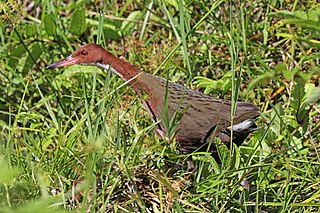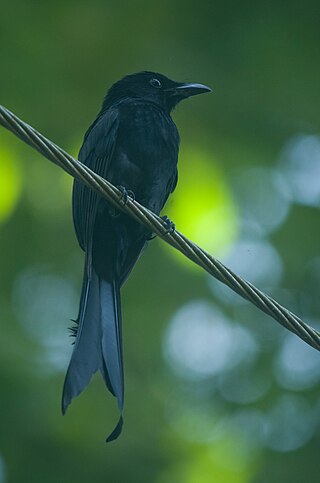
Aldabra is the world's second-largest coral atoll, lying southeast of the continent of Africa. It is part of the Aldabra Group of islands in the Indian Ocean that are part of the Outer Islands of the Seychelles, with a distance of 1,120 km (700 mi) southwest of the capital, Victoria on Mahé Island. Initially named by Arab seafarers for its harsh environment, Aldabra became a French colony dependency in the 18th century, leading to the exploitation of its natural resources, particularly giant tortoises. After passing through British hands, Aldabra faced potential military use in the 1960s, but international protests resulted in its protection. The atoll boasts unique geography, featuring the world's largest raised coral reef and a large shallow lagoon. Aldabra's history involves human impact, including failed agricultural ventures. Post-World War II, conservation efforts increased, leading to its inclusion in the British Indian Ocean Territory and eventual independence for Seychelles. Following an international protest by scientists known as the 'Aldabra Affair,' the Royal Society of London and later the Seychelles Islands Foundation conducted research, leading to Aldabra's declaration as a UNESCO World Heritage Site in 1982. The atoll's flora and fauna, notably the giant tortoises, comprise an 'ecological wonder', with Aldabra serving as a critical breeding ground for various species. Conservation challenges, such as invasive species and plastic pollution, persist, but protective measures, including UNESCO designation, underscore Aldabra's significance as a natural vital scientific research site. Aldabra receives limited tourism to safeguard its delicate ecosystem and is accessible primarily through guided tours.

The drongos are a family, Dicruridae, of passerine birds of the Old World tropics. The 31 species in the family are placed in a single genus, Dicrurus.

The black drongo is a small Asian passerine bird of the drongo family Dicruridae. It is a common resident breeder in much of tropical southern Asia from southwest Iran through Pakistan, India, Bangladesh and Sri Lanka east to southern China and Indonesia and accidental visitor of Japan. It is an all black bird with a distinctive forked tail and measures 28 cm (11 in) in length. It feeds on insects, and is common in open agricultural areas and light forest throughout its range, perching conspicuously on a bare perch or along power or telephone lines.

The white-bellied drongo is a species of drongo found across the Indian Subcontinent. Like other members of the family Dicruridae, they are insectivorous and mainly black in colour, but with a white belly and vent. Young birds are, however, all black and may be confused with the black drongo, which is smaller and more compact in appearance. The subspecies found in Sri Lanka has white restricted to the vent.

The greater racket-tailed drongo is a medium-sized Asian bird which is distinctive in having elongated outer tail feathers with webbing restricted to the tips. They are placed along with other drongos in the family Dicruridae. They are conspicuous in the forest habitats often perching in the open and by attracting attention with a wide range of loud calls that include perfect imitations of many other birds. One hypothesis suggested is that these vocal imitations may help in the formation of mixed-species foraging flocks, a feature seen in forest bird communities where many insect feeders forage together. These drongos will sometimes steal insect prey caught or disturbed by other foragers in the flock and another idea is that vocal mimicry helps them in diverting the attention of smaller birds to aid their piracy. They are diurnal but are active well before dawn and late at dusk. Owing to their widespread distribution and distinctive regional variation, they have become iconic examples of speciation by isolation and genetic drift.
The Aldabra brush warbler is an extinct bird in the acrocephalid warbler family. It was endemic to the atoll of Aldabra in the Seychelles and an individual was last seen in 1983.

The spangled drongo is a bird of the family Dicruridae. It is the only drongo to be found in Australia, where it can be recognised by its black, iridescent plumage and its characteristic forked tail. It feeds on insects and small vertebrates. It has complex and varied calls and is a mimic of the sounds it hears. It arrives in Queensland in late spring and breeds high in an isolated tree, producing three to five young each year.

The Malagasy coucal or Madagascar coucal is a species of cuckoo in the family Cuculidae. It is found in Madagascar and in the Seychelles, where it occurs on Aldabra and was formerly present on Assumption Island and Cosmoledo. Its natural habitats are dense vegetation in subtropical or tropical moist lowland forests, mangrove forests, rough grassland, marshes and reedbeds.

The white-throated rail or Cuvier's rail, is a species of bird in the family Rallidae.

The Andaman Drongo is a species of bird in the family Dicruridae. The species is endemic to the Andaman Islands of the Indian Ocean. There are two subspecies, the nominate race being found across the main islands of the archipelago, and the race dicruriformis occurring on Great Coco Island and Table Island in the north of the chain

The crow-billed drongo is a species of bird in the family Dicruridae. It is native to moist tropical forests of southeastern Asia where its range extends from India to the Philippines and Indonesia. It is a completely black bird with a shallowly forked tail and is similar in appearance to the black drongo. It breeds between April and June, the cup-shaped nest being built in the fork of a branch by both birds, the female afterwards incubating the eggs. It is a common bird and the IUCN has listed it as "least concern".

The Wallacean drongo or Greater Wallacean drongo is a species of bird in the family Dicruridae. It can be found in the countries of Indonesia and East Timor. It was formerly considered to be conspecific with the hair-crested drongo.

The crested drongo is a passerine bird in the family Dicruridae. It is black with a bluish-green sheen, a distinctive crest on the forehead and a forked tail. There are two subspecies; D. f. forficatus is endemic to Madagascar and D. f. potior, which is larger, is found on the Comoro Islands. Its habitat is lowland forests, both dry and humid, and open savannah country. It is a common bird and the IUCN has listed it as "least concern".
The Grand Comore drongo is a species of bird in the family Dicruridae. It is endemic to Comoros.

The Sumatran drongo is a passerine bird in the family Dicruridae. It was formerly considered conspecific with the hair-crested drongo. It is endemic to the island of Sumatra in Indonesia. Its natural habitat is subtropical or tropical moist lowland forests. It is threatened by habitat loss.

The Mayotte drongo is a species of bird in the family Dicruridae. It is endemic to Mayotte.

The Aldabra flying fox is a species of megabat in the genus Pteropus. It is endemic to the Aldabra Atoll in the Seychelles, like Chaerephon pusilla, though the latter may be the same species as the little free-tailed bat.

The Sri Lanka drongo or Ceylon crested drongo, is a species of bird in the family Dicruridae. It is endemic to Sri Lanka. It was previously considered a subspecies of the greater racket-tailed drongo. Its natural habitats are subtropical or tropical moist lowland and montane forests.
The Tablas drongo is an Asian bird of the family Dicruridae. It was formerly considered conspecific with the hair-crested drongo.

The Aldabra fody is a passerine bird in the family Ploceidae. It is endemic to Aldabra, an atoll northwest of Madagascar, part of Seychelles. Regarded as conspecific with the Comoros fody in the past, it is now recognized as a distinct species by the International Union for the Conservation of Nature (IUCN). Both sexes are yellow in color across much of the body, with breeding males orange-scarlet on the head and neck. The species has a large and powerful bill, used to compete with other birds of Aldabra for food. Nesting occurs over several months, often in introduced coconut palms and Casuarina trees. The Aldabra fody is considered endangered by the IUCN, threatened by predation of nests and drought. Hybridization with the related Madagascar fody has occurred in the past, but is not currently considered a danger to the species.


















